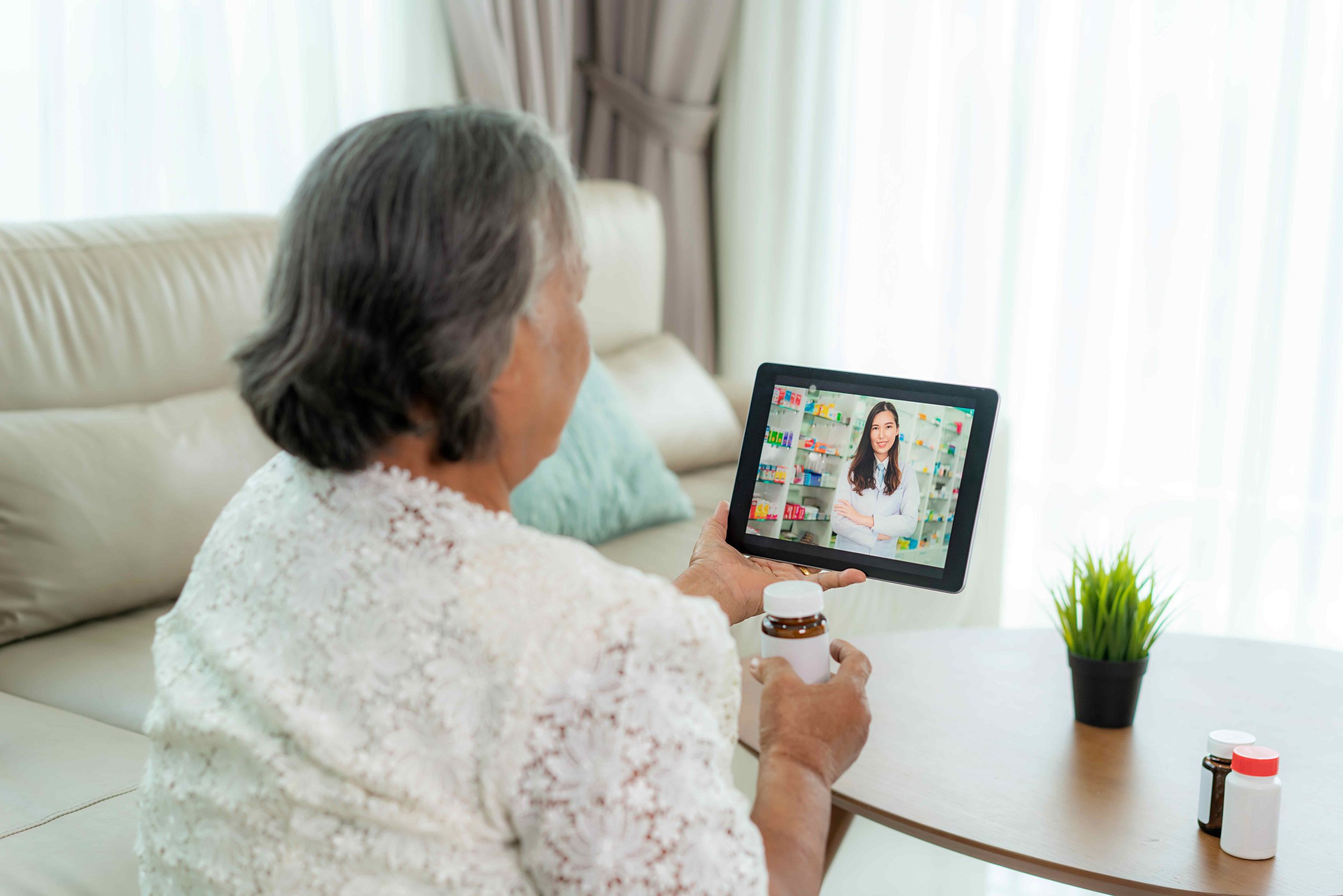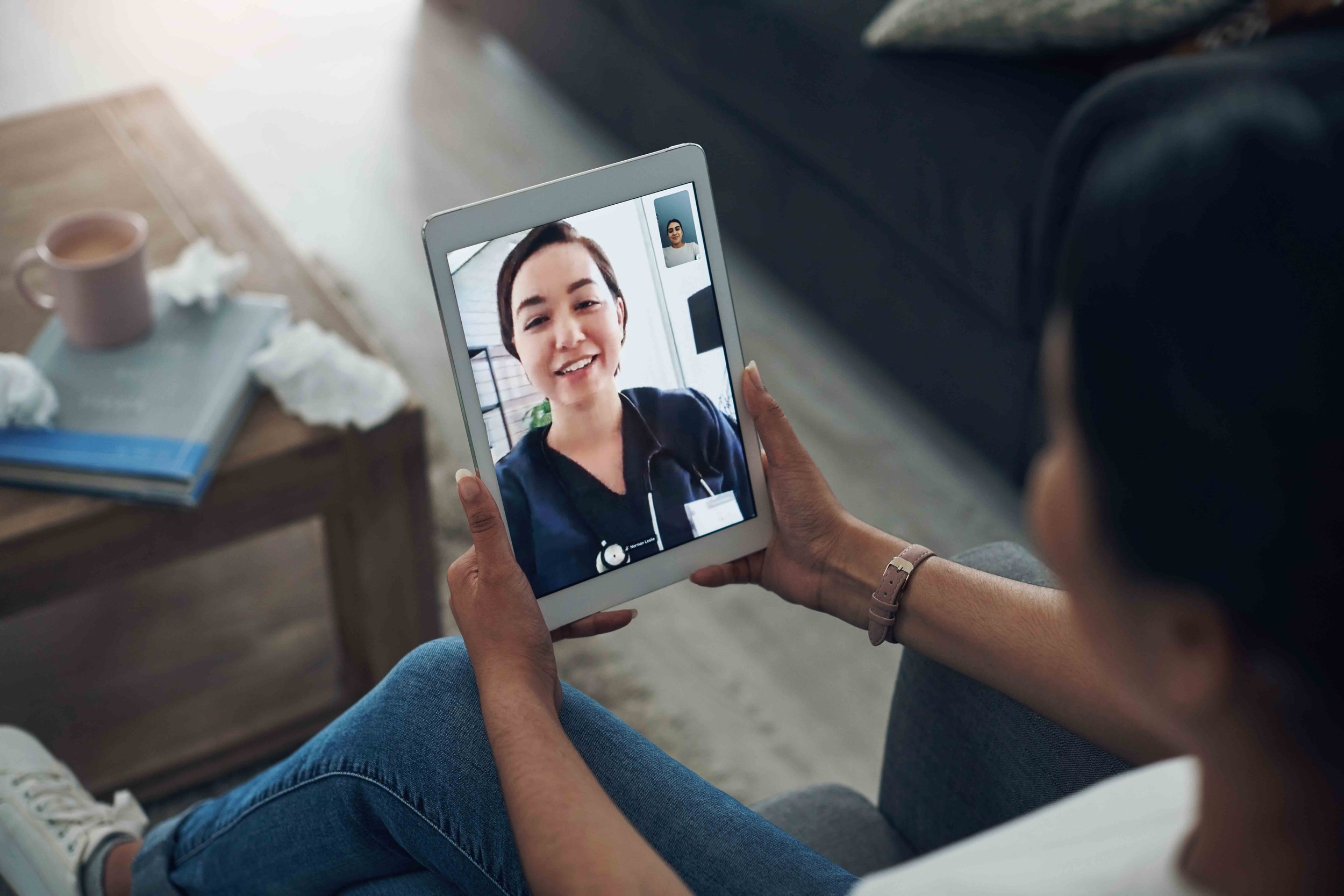The Benefits of Virtual Healthcare
One thing we have learned over time is that humans are a remarkably adaptable species. Our bodies adapt to new climates and environments as we travel and move to new parts of the world. Our genes adapt to ward off viruses or allow us to thrive off foods in a particular area. Our minds adapt as we welcome new ways to keep us moving forward in a technologically advancing world.
Whether we like it or not, virtual healthcare is here to stay. Some of you may be new to this type of medicine practice but don’t worry, you too will adapt, especially as you recognize both the convenience and comfort that this type of healthcare brings.
Virtual healthcare, also known as telemedicine and telehealth, use HIPAA secure systems which means you can be sure that compliance measures have been taken for your privacy. Some electronic health record portals have established telehealth platforms, other sites use links to various platforms such as Zoom.
Dr. Rathod has been using telemedicine more regularly since March 2020, when the Covid-19 pandemic began and Katie Sherman has solely relied on a virtual platform to deliver her care. We find that more patients are comfortable with telemedicine than we anticipated.
The Benefits
The benefits of a virtualized platform from the point of view of the patient is that it allows you to:
See your doctor from the comfort of your home or office without having to drive and find parking. This is especially true for patients who need crutches, walkers or wheelchairs where transportation seems painfully slow and laborious.
Cut costs to find child care or spousal care, lost time from work etc.
Have quicker access and appointment times.
Accomplish tedious tasks such as filing out forms and uploading pictures easily from the comfort of your own home on your own time, rather than having to show up early to a doctor’s office and wait for someone to assist you.
Bring out all your medications and supplements to confirm that you are taking the right doses and combinations.
Avoid exposure during an epidemic, such as influenza or even a pandemic, keeping both you and the healthcare provider safe and allowing the country to better control infectious diseases.
Feel safe and comforted in your own home when speaking with your medical professional. This has been a pivotal breakthrough for those suffering from mental health issues working with therapists or psychiatrists.
Check vitals the day of your visit and continue to share your readings daily, weekly, etc., by recording the readings online.
The Disadvantages
There are some situations where you may want to consider if telemedicine is the right choice for you. Some of these cases are:
Those who are elderly or technologically challenged, whom may resist getting on virtual platforms. If a patient does not own a computer or smartphone with a camera or have an email address where they can receive a link, this would not be a good fit.
If you have an acute situation where waiting for a telehealth appointment may delay a diagnosis where an additional ER or urgent care visit is needed following the telehealth visit.
If you are needing to use health insurance, as many insurances do not cover telehealth visits.
If you are unable to describe your symptoms clearly, which could lead to a misdiagnosis.
Visits that require physical care, such as an OB needing to complete a pelvic exam or check the head position of a fetus, or a surgeon needing to exam a patient prior to surgery.
If you have rowdy kids or pets that you are unable to remove from the room, making it too hard for you to be present and focus.
Patients experiencing domestic abuse at home, either physically or emotionally, and are unable to speak their mind freely making their appointments feel threatening or worthless with an abuser in the background.
The View From a Physician’s Perspective
As a physician who has worked in office seeing patients face-to-face for over 30 years, beginning to pivot to a more telemedicine approach in March of 2020, Dr. Rathod has experienced both sides of the spectrum and has chosen to fully commit to a telehealth practice. These are some of the perks and downfalls from her perspective:
Most internists and family practitioners find that we can cover 75-80% of diagnosis using a virtual platform.
In many cases, we get a better assessment of your ability to navigate around your home, how you function with family members, and get a general sense of your comfort in your home.
We find it much easier to better assess your medication and supplement list.
There are some instances where internet connection is unstable and the appointment most be conducted by phone. This is less satisfactory than a video interview with most physicians. It may however suffice for routine filling of prescriptions for chronic conditions.
With virtual visits we are unable to examine a patient by listening to their heart or lungs, or complete a physical exam of a localized lesion such as ear issues. Therefore we are unable to function as your primary care physician. Due to this most telehealth platforms in the insurance model are for chronic follow up or semi acute conditions only.
In the Functional Medicine setting, telehealth is the preferred way as most patients see a primary care physician through their insurance and we function as a separate consultants.
At FAIM, we hope to make your telehealth visits cozy and comfortable and are here for you as you transition into our virtual practice. If there is anything we can do to better serve you during your visits, please let us know.
Want to explore deeper to see if FAIM is the right Functional Medicine telehealth fit for you? Book a free 15-minute Discovery Call and see how we can assist you in your unique health journey.




